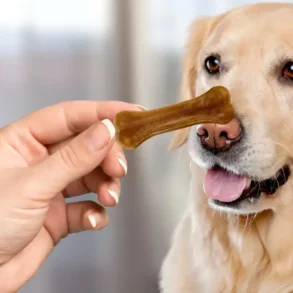
Are certain breeds more at risk?
Small dogs are more likely to develop dental problems more quickly and at a younger age, Coffman says. “Their compact mouths, heads and faces, along with other genetic features, predispose them to rapid tartar buildup, plaque and gingivitis more than larger dogs,” he explains. Other breeds at risk are those with flat faces such as Boston terriers or pugs, he says. Their teeth are often crowded or misaligned due to their head structure, leading to a greater chance of developing the disease. “As they get older, they lose jawbone density, often requiring extractions at a younger age compared to larger dogs.”
The same can be true among cats. “Persian and exotic cat breeds with flat faces … have similar dental issues, which result from crowded and malpositioned teeth,” Manucy says.
The good news: Dental disease is preventable
As is the case for humans, good oral hygiene can keep periodontal disease at bay. Here are six things you can do to improve your pet’s teeth — and in the process, their overall health and well-being.
Video: Getting the Best, Most Affordable Care for Your Pet
Brush their teeth daily
In humans, good oral health starts with routine toothbrushing. The same is true in pets, according to Hoyer. “Just like in people, brushing removes plaque, which is a bacterial biofilm, and reduces gum inflammation,” she says. “Ideally, brushing takes place once a day.”
If every day sounds like a slog, you need to brush their teeth at least three times a week to make a difference in plaque and tartar buildup, according to the VCA Animal Hospitals website.
Use a pet toothbrush
Be sure to use a pet-specific toothbrush that’s soft-bristled and angled to reach the tooth surface, as well as pet-specific toothpaste, Manucy advises. “Finger brushes and dental wipes are a great training tool to get the pet used to brushing but are not as effective at removing plaque from the tooth surface as angled-handle brushes,” she says. “It is also helpful to use a toothpaste that is flavored for pets and does not contain fluoride for safer swallowing.”
Introduce toothbrushing slowly
“Your pet may need time to get used to having their teeth brushed, so it’s best to start slowly by letting them sniff the brush and toothpaste before attempting to clean their teeth,” Miller says. “When brushing your pet’s teeth, be sure you are gentle with the toothbrush and avoid scrubbing too forcefully against their gums. Finally, remember to reward your pet with treats before and after brushing, so they create a positive association with the routine.”
Pets who get used to toothbrushing might learn to tolerate more advanced oral health tools. “I know dogs that have their own water flossers and sonic toothbrushes, so if you start early, go slow and keep it positive, dogs can get used to a lot,” Hoyer says.
If brushing at home isn’t working out, your pet groomer might have the magic touch: Many offer toothbrushing services for a small fee.
This post was originally published on this site be sure to check out more of their content.







































